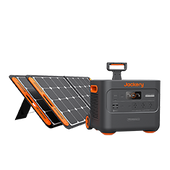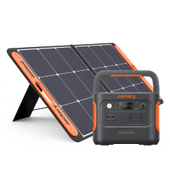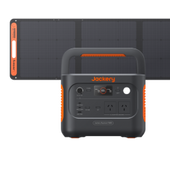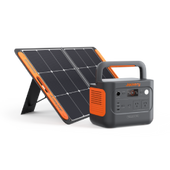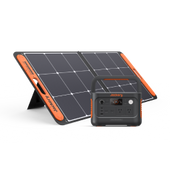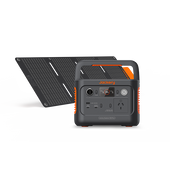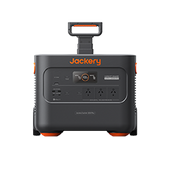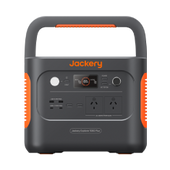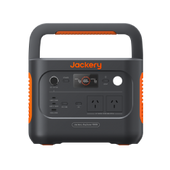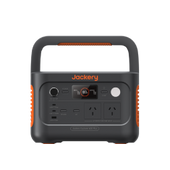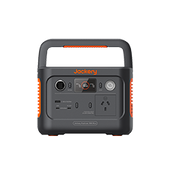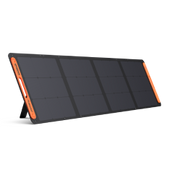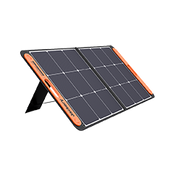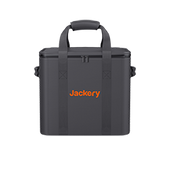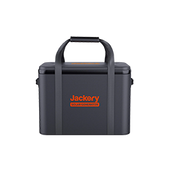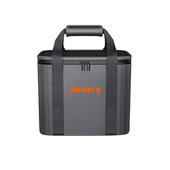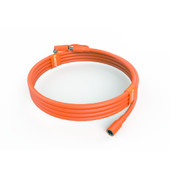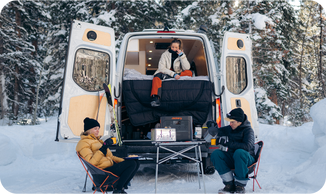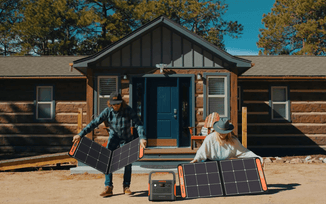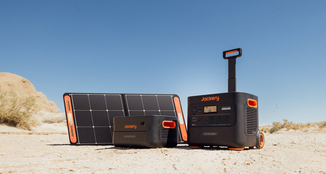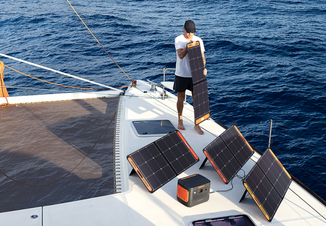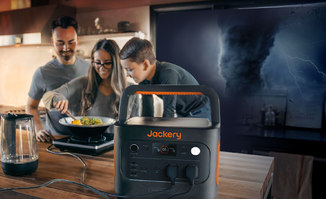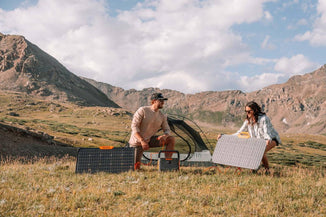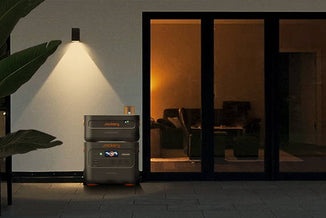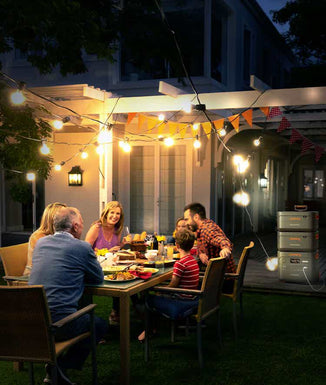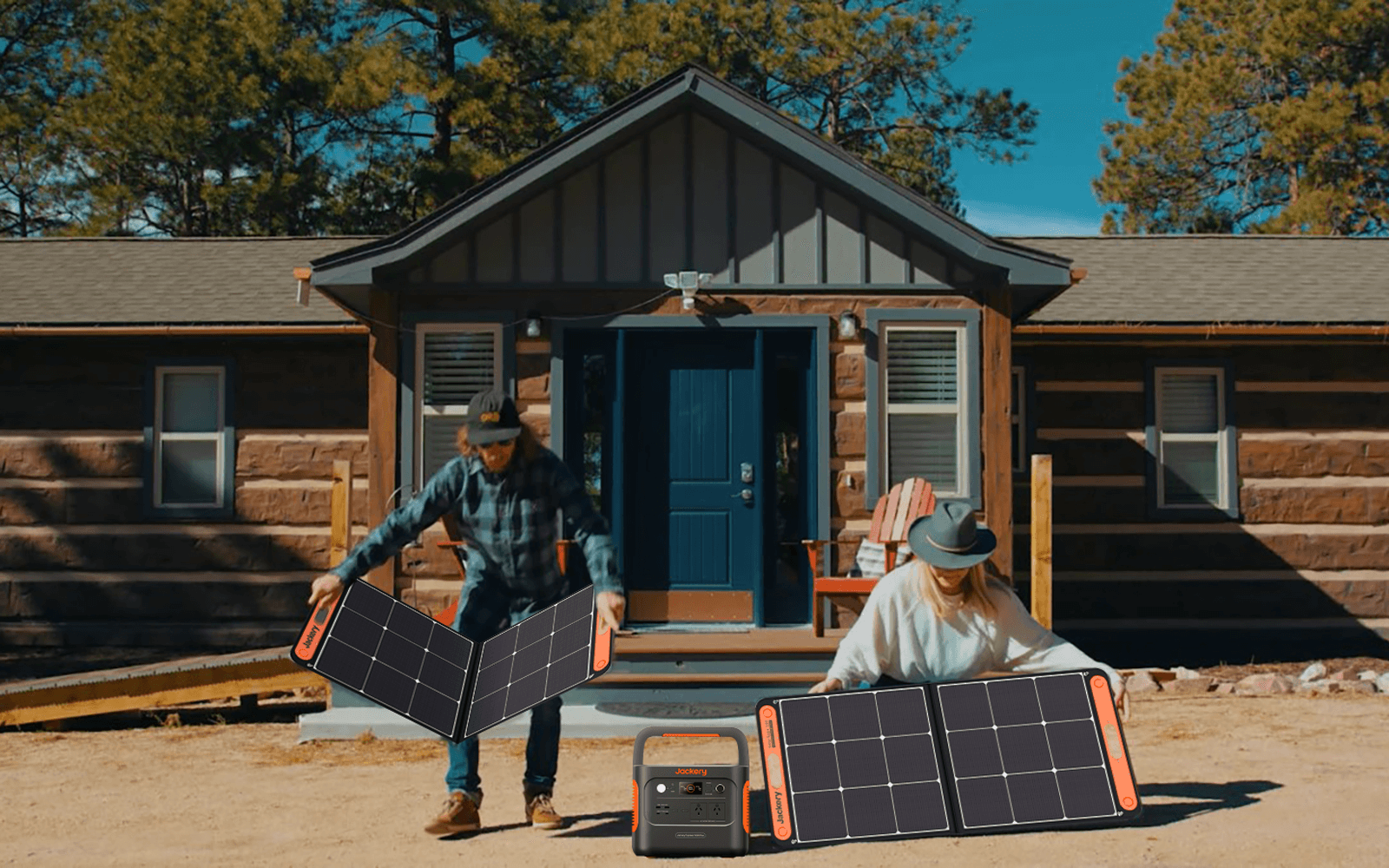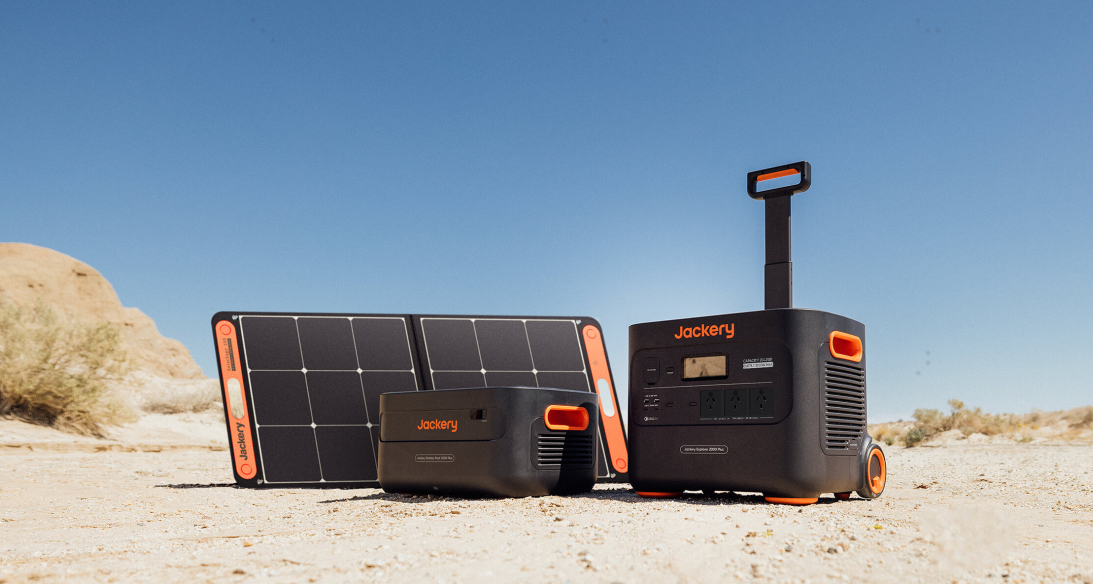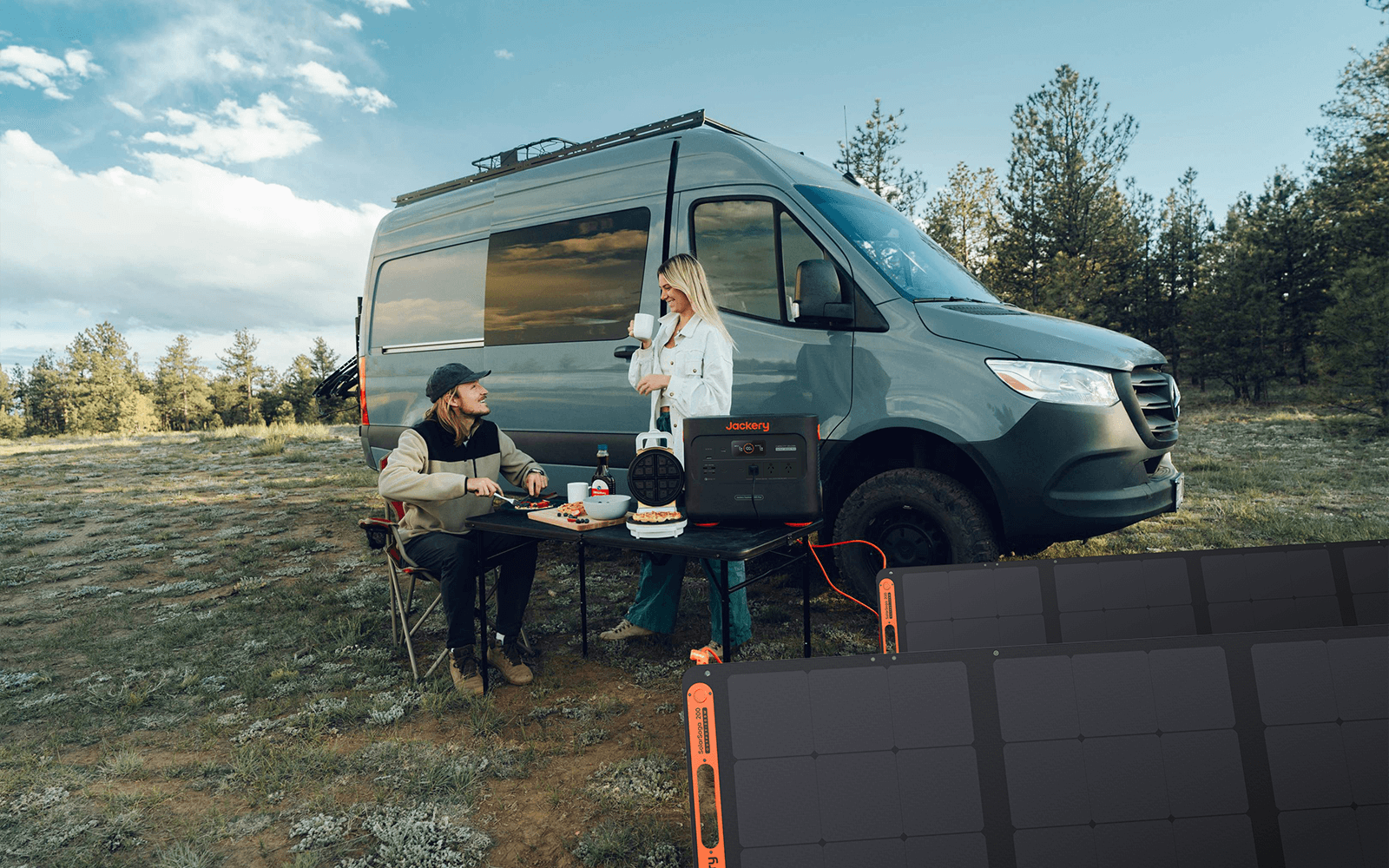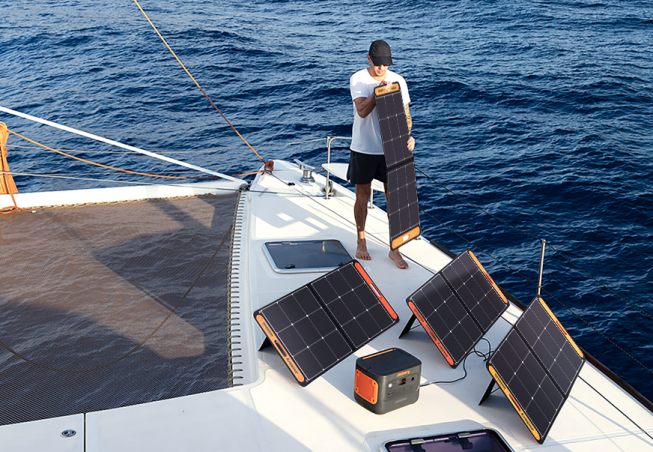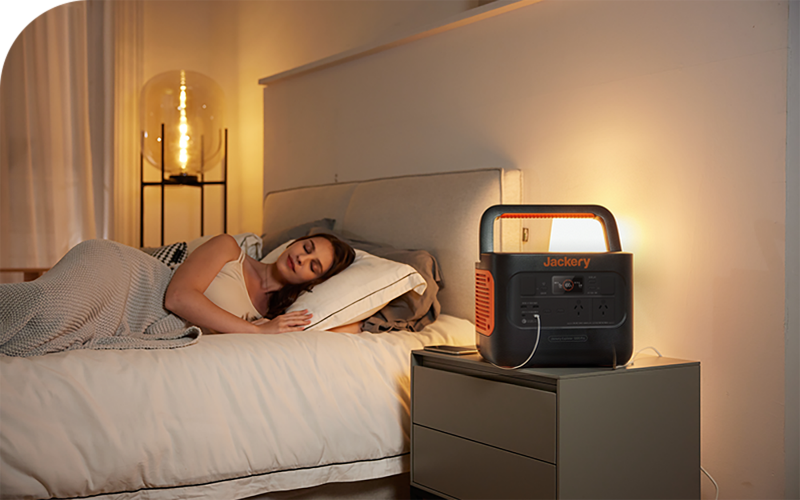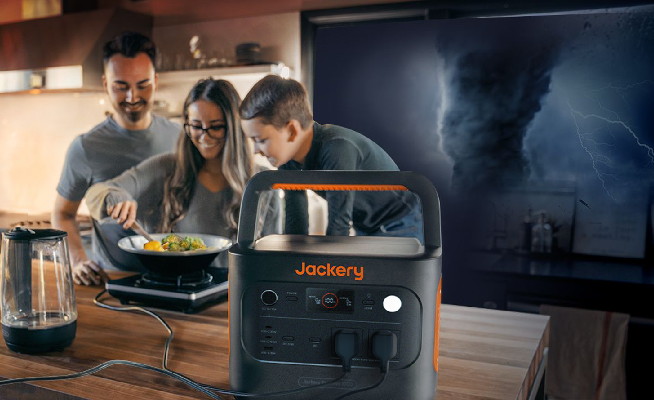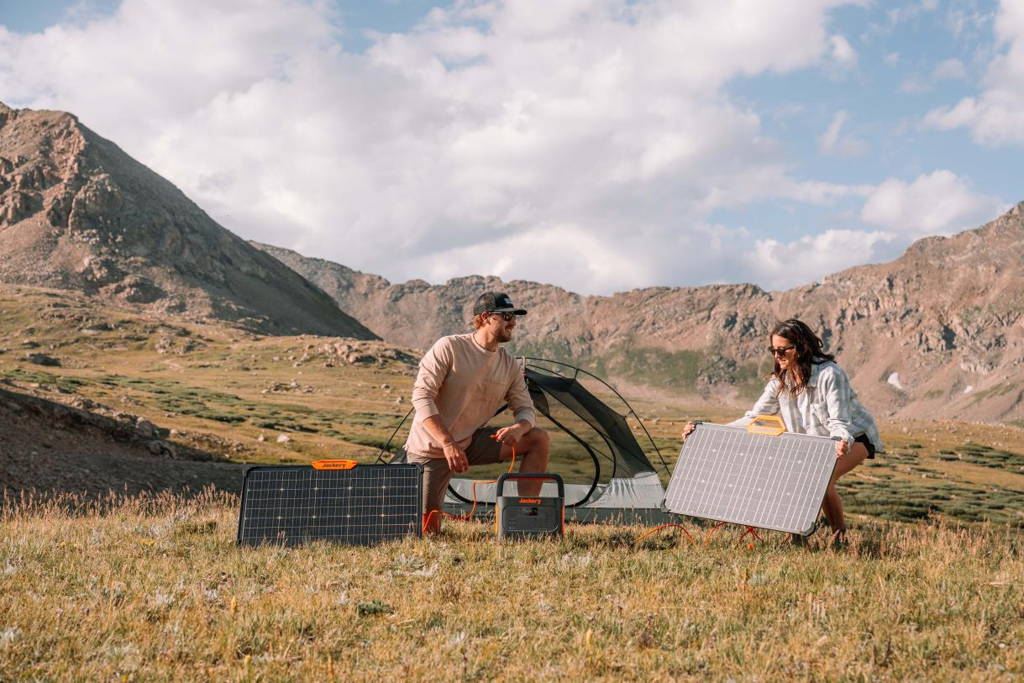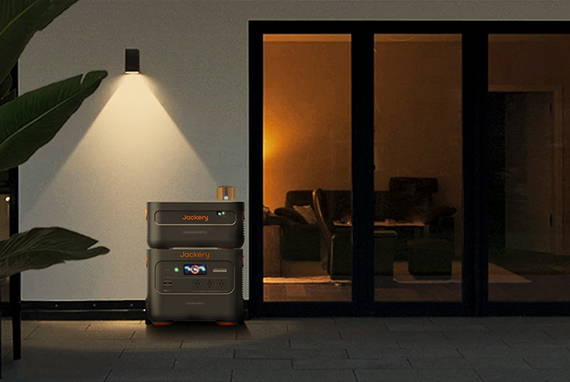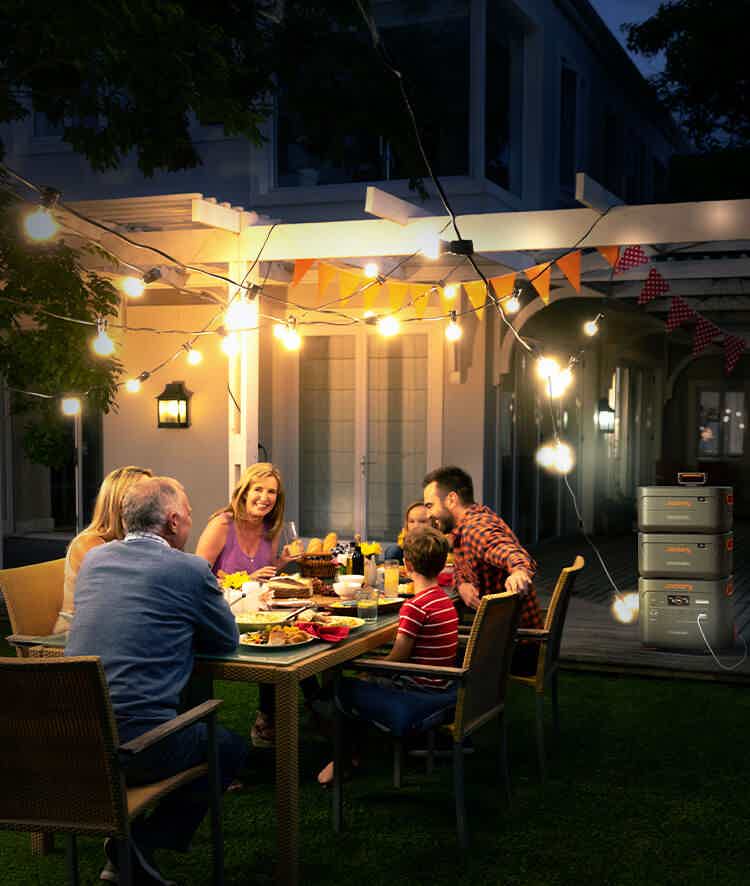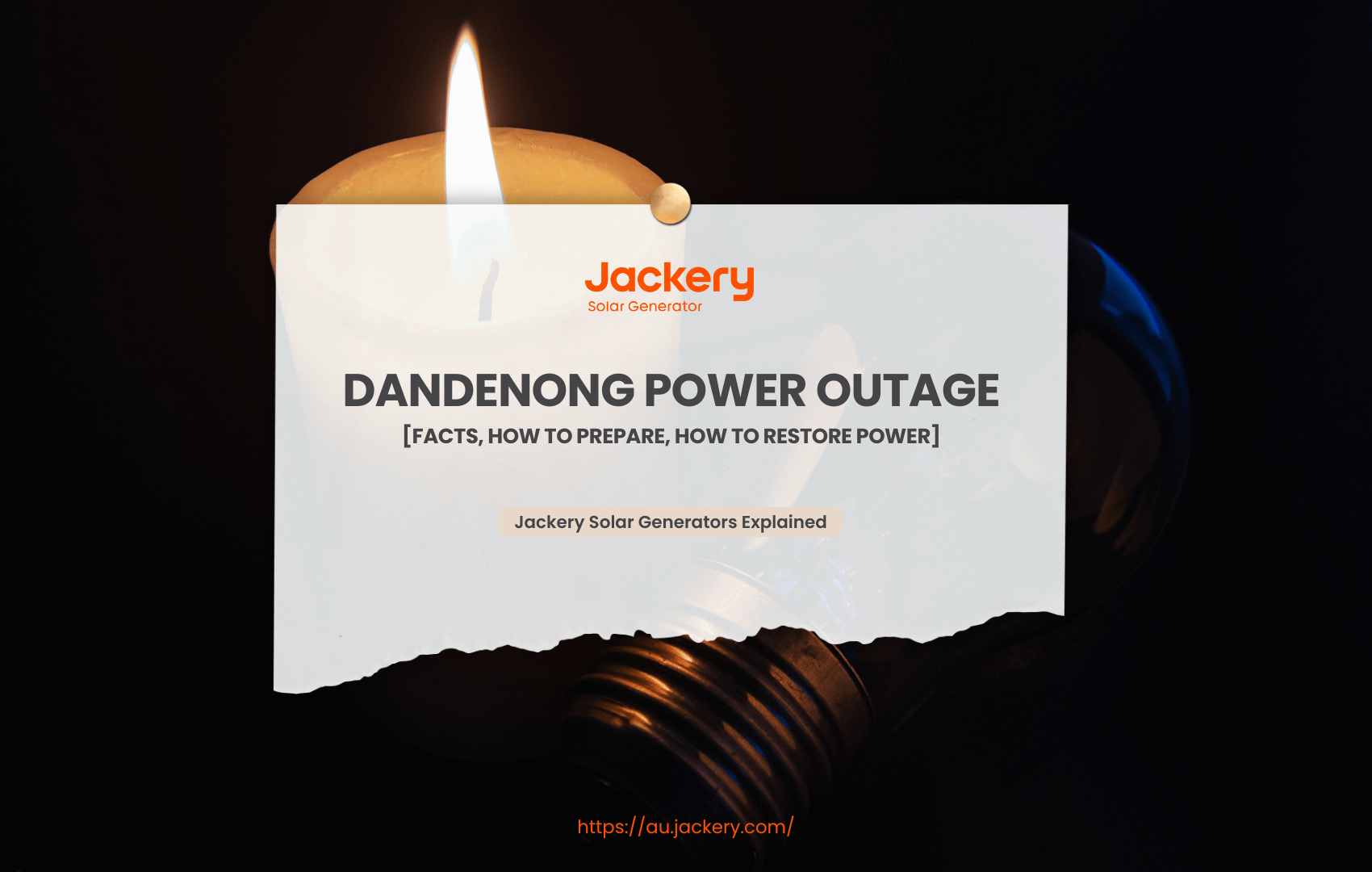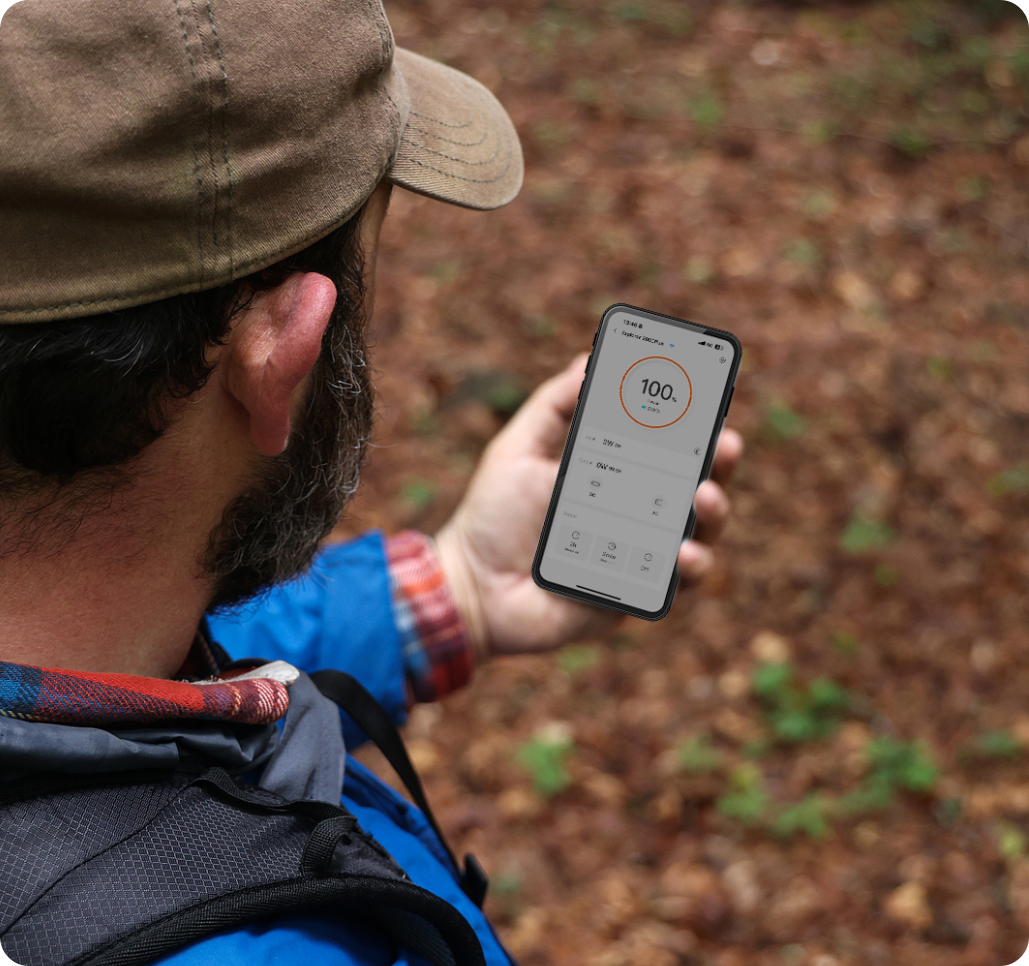|
Key Takeaways: |
|
- Power outages rarely happen in Dandenong, Victoria, but there are still some reasons for their occurrence, such as severe weather and unexpected technical faults. - You can call (361) 573-2428 to report a power outage. - It's necessary to prepare an emergency Kit and plan for upcoming power outages. - Remember to turn off all electrical appliances and unplug them at the switch to safeguard your home, mainly if a storm causes a power outage. - When there is a power outage, you can choose a Jackery Solar Generator 1000 Plus or 2000 Plus to charge essential appliances. |
Dandenong Power Outages Facts
Power outages are uncommon in Dandenong, a city in Victoria, yet they can still impact every house wired into the system. There may be sporadic disruptions to your gas or electricity supply. The government has implemented several measures to control and lessen the effects of power outages, such as sophisticated monitoring systems, quick reaction teams, and community communication plans to educate locals during disruptions.
What Causes Dandenong Power Outage
Numerous factors can lead to localised power outages in Dandenong, such as extreme weather, including:
- Lightning, floods, heat waves, or strong winds
- Trees obstructing powerlines
- Bushfires
- Unanticipated technological issues
- Automobile mishaps
- Scheduled necessary maintenance tasks
Rarely, to assist in balancing supply and demand at the busiest time of day. Localised power outages are more likely to occur on days when there is a total fire ban and during harsh weather. Call the faults and emergencies number on your most recent power bill or contact your electricity distributor to report an outage.

Dandenong Power Outage News
Thirty-three per cent of Victorian houses remained without electricity on February 13, 2024, one week after powerful storms hit the state. Dandenong was also severely impacted. Over 500,000 people were disconnected from the electrical grid during the height of the outages.
Following severe storms that struck the Greater Dandenong area on the afternoon of February 13, hundreds of houses are still without electricity, and wait times of several days are anticipated. As of 10.30 a.m. on February 14, around 2300 customers in the region, including Rowville, were classified as not having electricity by provider United Energy.
This significantly decreased from the storm's peak, when over 20,000 customers were affected. However, there was expected to be a delay until February 18 before power was restored. In addition, train services on the Dandenong lines were interrupted because of floods at Sandown Park station. For the impacted area, buses took the role of trains.
A "few branches/trees down" and floodwater encircle the Springvale campus of Springvale Rise Primary School, which was described as "its little island."
How to Report a Dandenong Power Outage
Victoria Electric Cooperative is always prepared to handle power disruptions by working year-round. Our teams are ready to mobilise during a power outage, and our vehicles are packed in anticipation of severe weather.
The Victoria Electric Cooperative can quickly restore your service if your power goes out because a team at the headquarters monitors the system around the clock. You can stay informed about any current outages by visiting the Outage Centre.
To Report A Power Outage - 24 Hours A Day—Please Call (361) 573-2428
Outage Information Hotline—Please Call (361) 582-5555
Outage Map—You can check it on the United Energy Outage Map.
How to Prepare for a Dandenong Power Outage?
It pays to be ready if you are aware that there will be a planned power outage or if you are aware that storms and other unforeseen circumstances could cause a blackout.
The life support energy regulations may protect you or any family member who uses life support equipment. This implies that you should receive advance notice of any power outages from your local distributor and that your property will be reconnected as soon as possible in the case of a power outage in Dandenong.

Step 1: Charge All Communication Devices
Important communication devices like laptops, tablets, cell phones, extra batteries, and power banks should be completely charged before a planned or anticipated power outage. Consider getting a solar power bank to help keep your gadgets running during a protracted power outage.
Step 2: Put an Emergency Kit and Plan
Assemble a home emergency kit, including medical supplies, medications, personal hygiene items, flashlights, and portable power banks. Always have a battery-operated radio to monitor emergency services for updates.
If a severe weather event causes a power outage, grab important papers, health records, pet insurance and house insurance policies, and emotional little personal objects if you must flee your house fast.
Here are some essentials you can refer to:
|
Dandenong Power Outage Emergency Kit |
|
|
Important contacts |
Fill out the list in this pamphlet and store these phone numbers in a convenient location. |
|
Access to a phone |
For example, a mobile phone that is charged and runs without the need for energy. |
|
Alternative lighting |
Use torches or candles, for example. Remember to keep open flames away from gas sources and combustible materials. |
|
Alternative cooking facilities and heating |
Substitute appliances for heating and cooking. Remember that certain gas appliances might still need to be powered by electricity. Ensure that portable appliances' gas connections are always kept clean and functional. Patio heaters and other outside gas appliances should never be brought inside. |
|
A battery-powered radio |
To stay informed about weather and power disruptions keep an eye on news sources. |
|
Food & Water |
Food items in your refrigerator or freezer may become dangerous to consume during an extended power outage. Ensure you have enough non-perishable food and beverages, such as bottled water. |
Step 3: Get Your Home and Vehicles Prepared
By getting ready for a severe weather event that could result in a power outage, you can reduce the damage to your house and its valuables. To assist in minimising damage during strong winds, secure loose things in the backyard, such as athletic equipment, bikes, trampolines, outdoor furniture, and tools.
If at all feasible, park your cars in a covered garage or carport. Consider whether you can easily access your car during a planned repair outage—your electric gates or garage doors may not work. Regardless of whether you drive an electric, diesel, or gasoline car, you must also ensure your fuel is full.
Step 4: Prepare for Backup Power
Backup power can provide temporary power during a power outage and keep essential appliances and devices running. So consider investing in a backup power source, such as a portable power bank or solar generator. You need to understand how to operate and maintain backup power safely.
Home backup power tools like Jackery Solar Generators should be on standby to offer extra power for a set period. This allows us to meet our backup power and lighting requirements when the electricity goes out. It also charges vital devices such as cell phones and WiFi routers. So, even if the power goes out, we can still use these devices and communicate with each other.

Jackery Solar Generators for Dandenong Power Outages
Residents of Dandenong are accustomed to power disruptions, which are frequently caused by storms or grid maintenance. However, a portable power station like Jackery can lessen the inconvenience of these disruptions.
The Jackery Solar Generator provides an uninterrupted power source, helping you keep necessary devices operational throughout an outage. By pairing it with Jackery Solar Panels, you can capture and store solar energy, ensuring you have stored power ready for emergencies.
With multiple output options, the Jackery Portable Power Station allows you to charge various devices simultaneously, keeping you connected and prepared. Moreover, these Portable Power Stations are versatile - they can be charged via solar panels, carports, or wall outlets, making them ideal for planned and unexpected power needs.
The Jackery Solar Generator 1000 Pro has a 1002Wh capacity, powering 93% of your household appliances. Besides, the Jackery Solar Generator 2000 Plus has a battery that can be expanded from 2 kWh to 12 kWh. For this reason, the Jackery Solar Generator 1000 Pro and 2000 Plus are better choices for extra power at home.
Jackery Solar Generator 2000 Plus
A dependable backup source, such as the Jackery Solar Generator 2000 Plus, may offer practical power and peace of mind during unplanned power disruptions in Dandenong. This solar generator was created with households in mind, combining innovative technology and high capacity to maintain the functionality of vital gadgets during blackouts.
With additional battery packs, the Jackery 2000 Plus's outstanding 2 kWh capacity may be increased to 12 kWh. Thanks to our extendable design, you will never be without electricity, even during extended outages. The unit's high 3000W output covers all essential appliances, such as refrigerators, lights, and communication devices, making it an ideal backup source for managing the unpredictability of Dandenong's power issues.
Featuring a LiFePO4 battery, the Explorer 2000 Plus is built to last with over a decade of use. Not only does it offer long-lasting reliability, but it also operates with minimal noise and no emissions, making it safe for indoor use. Whether you need it for emergency preparedness or regular use, the Jackery Solar Generator 2000 Plus provides consistent and quiet power without fuel or fumes, perfect for any household.

- Massive Capacity: Expand from 2kWh to 12kWh for long-lasting power.
- High Output: Supports 3000W devices with a surge peak of 6000W.
- Fast Charging: Solar recharge in just 2.5 hours with six 200W panels.
- Advanced Safety: ChargeShield Technology provides 62 forms of protection.
- Sustainable Design: Emission-free, whisper-quiet operation at 30dB.
Jackery Solar Generator 1000 Plus
When dealing with unexpected power outages in Dandenong, a lightweight and compact power solution can be invaluable, and the Jackery Solar Generator 1000 Plus is exactly that. This model brings portability without compromising capacity, making it ideal for powering crucial devices immediately.
With a 1264Wh capacity and 2000W output, it supports 99% of devices with expandable capacity to 5 kWh, from small electronics to heavy-duty appliances. Its lightweight build and portability make it a versatile companion for power outages, blackouts, or brownouts.
This solar generator's Advanced IBC Technology ensures rapid charging in just 4.5 hours with four SolarSaga 100W solar panels, keeping you powered even off the grid. Its LiFePO4 battery cells guarantee 10 years of reliable use, offering over 4,000 charge cycles for consistent, long-lasting performance.
Enjoy total control with the Jackery App, which allows monitoring and customisation via WiFi or Bluetooth. Designed for modern users, the Jackery 1000 Plus combines power, portability, and cutting-edge technology to meet every need.

- Expandable Capacity in Compact Size: Supports up to 3 add-on battery packs (sold separately), expanding to 5kWh and ensuring 1-3 days of home backup power.
- Fast Solar Charging: Advanced IBC Technology, Fast Solar Charge in 4.5 Hours with Solar Panel 100W*4.
- Long-Lasting Power: LiFePO4 battery cells, lasting up to 10 years - providing 4,000 charge cycles.
- Pass-through Charging: Charge the power station and your devices simultaneously.
What To Do During & After a Power Outage in Dandenong?
It's critical to understand how to handle the issue both before and after a Dandenong power outage to maintain safety and reduce disturbances. Taking the actions listed below can have a significant impact.
Tip 1: Check The Source and Nature of The Outage
It is critical to determine whether the power outage is specific to your house, neighbourhood, state, or street. As soon as you see a power outage, record the time, check the safety switch in your house, and call your neighbours.
Contact a certified electrician to find out what's causing the outage and if it's limited to your home or just a portion.
For information from emergency services, tune in to a radio that runs on batteries. In the event of severe weather, check the Bureau of Meteorology Victorian Warnings Summary on your phone. Victorians can also obtain information and emergency warnings via the VicEmergency mobile app and website.
Tip 2: Turn Off or Unplug Electronic Devices
To protect your house and belongings from a power surge, turn off and disconnect any electrical equipment at the switch, especially if the power outage is due to a storm. To help you remember when electricity comes back to your property, leave an alarm clock or light on or keep an eye on a fixture like your oven clock.
Tip 3: Pay Attention to Food Safety
Only open the refrigerator and freezer doors when necessary to keep the food and air temperature cooler longer. Food that is cold or frozen should be kept at a low temperature. Food is safe to consume if it is still chilly—less than five degrees Celsius.
Think about putting food in the freezer instead of the fridge. Cold or frozen food can be stored and consumed for up to four hours once it reaches a temperature of at least five degrees Celsius. It must be thrown away after that. Once thawed, raw meat needs to be cooked right away.
Food that has been frozen and is still solid can be refrozen if power is restored. Place bagged ice under food packages and trays in freezers and refrigerators, or cover cold or frozen food with an insulating blanket during a prolonged power outage.
Tip 4: Use Alternative Heating, Cooling, Light & Hygiene Sources
Closing your curtains or blinds can help you maintain a comfortable temperature inside your home by blocking out the summer sun and the winter cold.
Drink lots of water, avoid physically demanding activities, and use damp towels to cool down a room during the heat. You may also stay warm in the winter without using the heater by dressing in several layers and donning a hat.
To reduce the chance of a fire, use torches instead of candles as light sources. Purchase a sufficient quantity of backup batteries. If your hot water supply isn't working, you can use disposable baby wipes for personal hygiene.
Tip 5: Check Your Fridge and Freezer Contents
To prevent food poisoning, carefully inventory the items in your refrigerator and freezer and note the duration of the power outage as soon as your home is powered back on. Avoid eating meat, poultry, or dairy items stored in a refrigerator or freezer without electricity.
Better Health Victoria says cold or frozen food should not be heated above 5°C. You can refreeze food in your freezer if it is still chilly to the touch and less than 5°C when the power is restored. Cold or frozen food must be consumed within four hours of becoming no longer cold to the touch and rising to a temperature of at least 5°C. It is no longer safe to drink after this point.
Throw out the contents of your refrigerator or freezer immediately if you have any doubts about their safety.
If an insured incident stops the energy supply to your refrigerator or freezer, RACV Contents Insurance will replace ruined food or prescription medication up to $500. You won't have to pay more if you file a claim only for food spoilage, but when you renew your policy, it can impact your No Claim Bonus.

Who Can Help Restore Power?
After an outage, restoring power is a systematic procedure for returning electricity to the impacted areas. This process is typically handled by your local electricity distribution business, which owns and maintains the poles and wires that supply electricity to your house. This section describes the complete restoration procedure and lists specific organisations that can assist you in restoring power.
Your Electricity Distribution Company
Your electricity distribution company maintains the poles and wires that deliver energy to your home. They typically arrange for a power outage to be repaired. You can contact them using the number for faults and emergencies on your most recent electricity bill.
State Emergency Services (SES)
For emergency help related to storms and floods, call the SES at 132 500 or visit their website at www.ses.vic.gov.au to stay updated. They can take note of the information and provide assistance as needed. Emergencies that pose a threat to life should be reported to 000.
Your Local Council
If you need information on emergency services in your area, especially if you are elderly, disabled, or require special assistance, contact your local council.
How to Restore Your Power
Most people anticipate that power will be restored when the electricity goes out in a few hours. However, longer-lasting disruptions could happen if a powerful storm leaves widespread damage in its wake. Co-op line crews put in a lot of overtime to safely restore service to as many customers as possible in the shortest time. If you find yourself in the dark, here's what's happening. Line crews investigate the source of an outage to determine its cause.
Lines of High Voltage Transmission—Rarely do the cables and towers that power transmission substations use fail, and thousands of customers do. However, these facilities must be fixed before damage occurs before other system components can function.
Distribution Substation—Each substation serves thousands or even hundreds of consumers. Line crews examine substations following a significant outage to ascertain whether issues are with the substation itself, the transmission lines that feed it, or farther down the line.
Main Distribution Lines—If the issue cannot be identified at a distribution substation, distribution lines are examined. These lines serve large consumer groups in towns or housing developments.
Tap Lines—Supply lines, also known as tap lines, are inspected if local outages continue. Outside of homes, businesses, and schools, these lines supply power to transformers positioned on pads for underground service or installed on poles.
Individual Homes—If your home continues to be without power, the service line connecting a transformer may need to be fixed. Please always call to report an outage and assist line crews in identifying these local problems.
Power Outage in Dandenong FAQs
The following are the frequently asked questions about the power outages in Dandenong:
1. How long do power outages usually last in Australia?
Blackouts are power outages that can affect entire cities or communities at any time. Depending on how severe the outage is, it can last from minutes to weeks and typically affects particular regions or electrical systems.
2. What state in Australia has the most renewable energy?
Tasmania. Renewable energy sources, primarily hydropower, account for 46% of Tasmania's energy consumption, while 16% of South Australia's energy comes from renewable sources.
3. Has electricity gone up in Victoria?
The Victorian Default Offer rates are set to take effect on July 1, 2023, and end on June 30, 2024. For customers on default offers, average annual bills will increase by almost 25% because the cost of wholesale electricity has increased significantly.
4. Can you shower if you lose power?
Fortunately, most plumbing systems don't require electricity, so your toilet should still function! The drawback of a power outage is that you should take brief showers if you must! The capacity of the water heater to keep hot water is limited, and specific citywide systems rely on electricity to pump sewage to buildings, which increases the risk of a rapid backup.
Final Thoughts
The recent Dandenong power outage emphasises the importance of being safe and prepared for such situations. As we've spoken, power outages may cause major disruptions to daily activities, so knowing how to react appropriately is crucial. It's critical to have a strategy in place to safeguard your loved ones and yourself. Reliable sources of information can also offer updates and direction throughout the outage. By being proactive, you can lessen the effects of power outages and ensure that everything runs smoothly.

